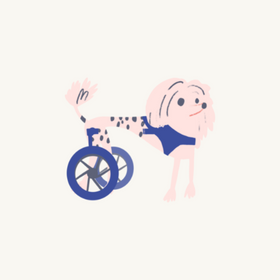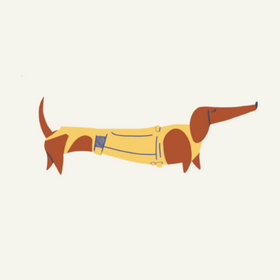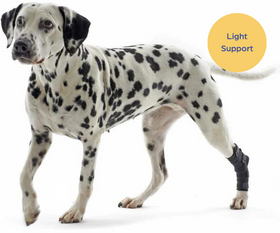01730 622544
Pain in Dogs - How to Recognise the Subtle Changes
How can we tell if our dog is in pain?
Just like us dogs feel pain for a variety of reasons: old age, dog arthritis, dental problems, infections, injuries, disease as well as discomfort when recovering from surgery. There are certain signs and changes we can see in our dogs behaviour, which will indicate there may be some underlying pain and inflammation. As we know our own dogs better than anyone else, it is often easier for the dogs owner to spot the early signs of their dogs pain. It is important to recognise any discomfort and make sure your dog's pain is diagnosed and treated. There are different ways to treat pain in dogs, some may need Vet prescribed drugs, while others will do well on a good quality natural pain supplement like Winston's pain formula.
Here are a few of the behavioural changes your dog may exhibit if they are suffering from pain.
SELF PROTECTION
- Hiding
- Protects a body part
- Doesn't put weight on a limb or limping
- Doesn't want to be held or picked up
POSTURE
- Hunched, with hindquarters raised and front end down on the ground
- Lays on their side
- Anything unusual in sitting or lying posture
VOCAL CHANGES
- Whimpering
- Yelping
- Whining
- Howling
CHANGES IN DAILY HABITS
- Decreased appetite
- Withdraws from social interaction
- Changes in sleeping patterns
- Changes in drinking habits
- Housetraining habits change
SELF-MUTILATION
- Licking
- Biting
- Excessive scratching of a particular part of their body
DOGS ACTIVITY LEVEL
- Restless (or stands up and lies down repetitively)
- Reluctant to move and tends to lie very still
- Seeks more affection than usual
- Pants excessively when at rest
- Difficulty getting up from a resting position
- Trembling or circling
AGGRESSION
- Acts out of character
- Aggressive tendency when normally a friendly dog
- Quite docile dog when normally hostile
- Growls, bites
FACIAL EXPRESSION
- Vacant stare
- Glazed or wide-eyed
- Appears sleepy
- Enlarged pupils
- Flattened ears
GROOMING
- Coat lacks normal shine
- Hair stands up in places
TREATING PAIN
There are generally five classes of pain reducing products we use to treat our dogs: nutraceuticals (A food containing health-giving additives) , NSAIDS (non-steroidal anti-inflammatory drugs), opioids, steroids, and natural alternatives. However, as with any medication especially with non-steroidal anti-inflammatory medications such as many pain-relieving "arthritis medications" there can be occasional adverse reactions for individual dogs.
Reactions can be variable, subtle, severe, or unusual. For dogs that suffer from severe reactions from the Vet prescribed drugs, it would be worth trying a fast acting natural pain and anti inflammatory like the Winston's pain formula. We have had great results with many dogs that cannot take NSAIDS, but do very well on the natural supplement. As all dogs are different, some dogs will do very well on a product that shows no results on another. We would always recommend doing you own research on any Vet drug or natural supplements before using them, so you know in advance of any side effects including those of long term use.

Looking for help with your dog?
We can help find the right solution for your dog
Feel free to give us a call on 01730 622544
or email us at woof@zoomadog.co.uk





